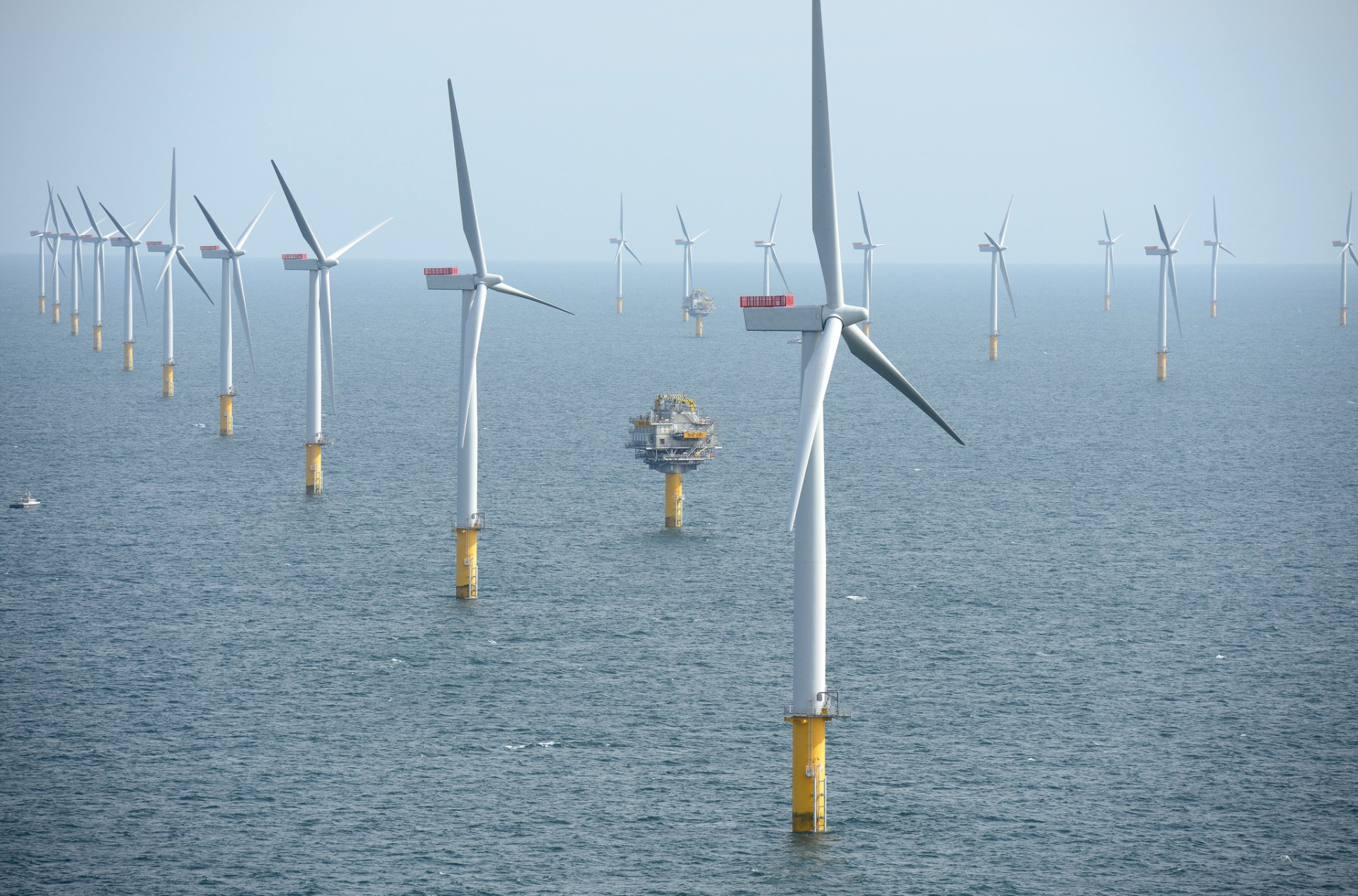For the first time, wind energy will become profitable without subsidies and cheaper than atomic energy.

Shelf wind farm Sheringham Shoal, UK
Critics of alternative energy often say that it develops only thanks to government subsidies and tax breaks. The cost of "green" energy is higher than the traditional, derived from the combustion of hydrocarbons and the splitting of atomic nuclei. Until recently, it was. But the truth is that alternative energy is becoming more profitable every year. Now the European wind power industry is approaching an important milestone: three new wind stations are planned on the coastal shelf, which will be built for the first time without government subsidies .
Offshore wind farms are by definition more expensive than land installations. Here, towers of wind turbines are installed on foundations of piles, driven to a depth of 30 meters. To transfer energy to the shore, you need to lay underwater cables tens of kilometers long.
Offshore wind power plants require higher towers and more massive foundations, and salt water threatens the corrosion of metal structures. In all respects, sea windmills are much more expensive than land analogues. True, they have an important advantage - they have greater efficiency due to regular sea winds. But this does not affect the high cost of building marine structures.
However, Europeans are trying to bring to profitability even offshore wind farms. Investors decided that by 2024-2025 it would be beneficial to build even without government subsidies. True, this is still theoretical plans that provide for the installation of wind generators of 13 and 15 MW, but there are no such plans yet. Now the largest turbine has a capacity of only 8 MW. But German investors expect that in a few years the manufacturers - Siemens Gamesa and MHI Vestas Offshore Wind - will produce the required equipment. Not only wind generators, but also new systems for transmitting electricity on the seabed will be needed: several innovative technologies are being tested now.
It is possible that one of the world's largest manufacturers of wind generators and wind power stations, Siemens Gamesa Renewable Energy, will participate in the construction of the first profitable offshore wind power plants. Bent Christensen (Bent Christensen), who at Siemens Gamesa Renewable Energy is responsible for financial forecasting the cost of electricity, gives its expert assessment. He explains that in 2013, new wind power projects supplied electricity at about 160 euros per megawatt-hour, and then industry representatives set a “realistic long-term goal” to reduce energy costs to 100 euros per megawatt-hour by 2020. So, according to him, this goal has already been achieved.
These estimates are confirmed by independent analysts. For example, in December 2016, Lazard, a financial consulting company, published an analysis of the market ( pdf ), in which the unsubsidized cost of electricity in new offshore projects at 105 euros per megawatt hour was derived, a decrease of 27% compared with 2014. The company concluded that offshore wind energy is cheaper than coal-fired power plants, solar panels on roofs and even cheaper than atomic energy! The diagram shows the cost without subsidies.

Three power plants in the North Sea, which are planned to be built without government subsidies, are shown on the map.

The map also shows an energy hub that will concentrate energy from several power plants — and deliver it to different countries. Channels are planned to be laid in the UK, the Netherlands, Germany, Denmark and Norway. In theory, the station owners can sell electricity where it is more expensive at the moment. The energy hub is supposed to be done on one or several artificial islands in the North Sea (see video).
Technicians who serve wind turbines can live in shifts on the island, spare parts will be stored there and service vessels will moor. In theory, it will reduce the cost of servicing wind power stations nearby. But the main thing is that the island will reduce the losses for the conversion and transmission of electricity, the HVDC converters will be located here, on dry soil.
Three new projects promise to further reduce the cost of electricity. For example, the Danish company Dong Energy is laid in general at an unprecedented price of 62 euros per megawatt-hour. This company has already started to build the Hornsea Project One offshore power station near the North Sea, which is positioned as the largest shelf power station in the world. 7-megawatt wind turbines 190 meters high at sea will occupy 407 km² in the sea, which can be compared to a rather large city. By 2020, they will reach a maximum capacity of 1.2 gigawatts, so this giant power city 120 km from the coast will be the first gigawatt wind power plant in the world.
Another power plant in the North Sea is planned by the German company Energie Baden-Württemberg , which also relies on a price below 75 euros per megawatt-hour.
According to experts, such a rapid fall in prices is caused by strong competition on all fronts - from the production of wind generators to installation and cabling services.
All Articles